Answer:

Explanation:
Given the second-order differential equation. Solve by using variation of parameters.

(1) - Solve the DE as if it were homogeneous to find the homogeneous solution
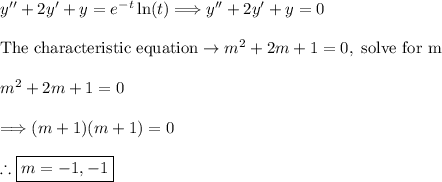

Notice we have repeated/duplicate roots, form the homogeneous solution.

~~~~~~~~~~~~~~~~~~~~~~~~~~~~~~~~~~~~~~~~~~~~~~~~~~~~~~~~~~~~~~~
Now using the method of variation of parameters, please follow along very carefully.
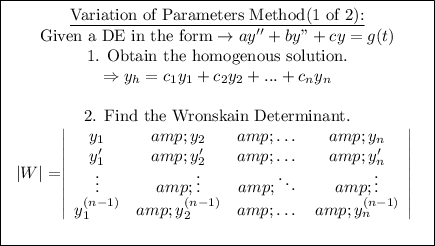
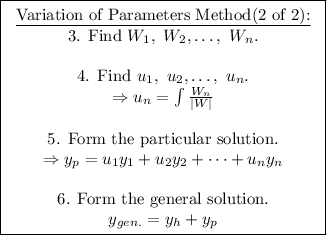
~~~~~~~~~~~~~~~~~~~~~~~~~~~~~~~~~~~~~~~~~~~~~~~~~~~~~~~~~~~~~~~
(2) - Finding the Wronksian determinant
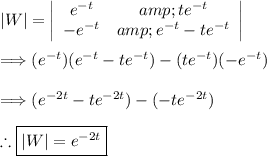
(3) - Finding W_1 and W_2
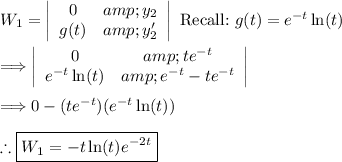
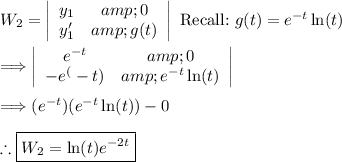
(4) - Finding u_1 and u_2
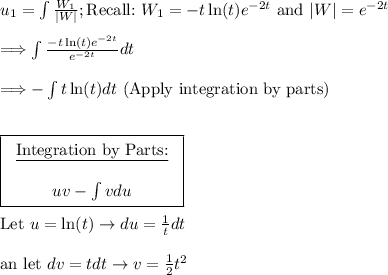
![\Longrightarrow -\Big[(\ln(t))((1)/(2)t^2)-\int [((1)/(2)t^2)((1)/(t)dt)]\Big]\\\\\Longrightarrow -\Big[(1)/(2)t^2\ln(t)-(1)/(2)\int (t)dt\Big]\\\\\Longrightarrow -\Big[(1)/(2)t^2\ln(t)-(1)/(2)\cdot(1)/(2)t^2 \Big]\\\\\therefore \boxed{u_1=(1)/(4)t^2-(1)/(2)t^2\ln(t)}](https://img.qammunity.org/2024/formulas/mathematics/high-school/cvr1q1eve90ucie0nsajnauit2d5vwl7ma.png)
![u_2=\int (W_2)/(|W|); \text{Recall:} \ W_2=\ln(t)e^(-2t) \ \text{and} \ |W|=e^(-2t) \\\\\Longrightarrow \int(\ln(t)e^(-2t))/(e^(-2t)) dt\\\\\Longrightarrow \int \ln(t)dt \ \text{(Once again, apply integration by parts)}\\\\\text{Let} \ u=\ln(t) \rightarrow du=(1)/(t)dt \\\\\text{an let} \ dv=1dt \rightarrow v=t \\\\\Longrightarrow (\ln(t))(t)-\int[(t)((1)/(t)dt )] \\\\\Longrightarrow t\ln(t)-\int 1dt\\\\\therefore \boxed{u_2=t \ln(t)-t}](https://img.qammunity.org/2024/formulas/mathematics/high-school/rr4uixe2u98q9ptnd73efvwxruy79mk4rf.png)
(5) - Form the particular solution

(6) - Form the solution

Thus, the given DE is solved.